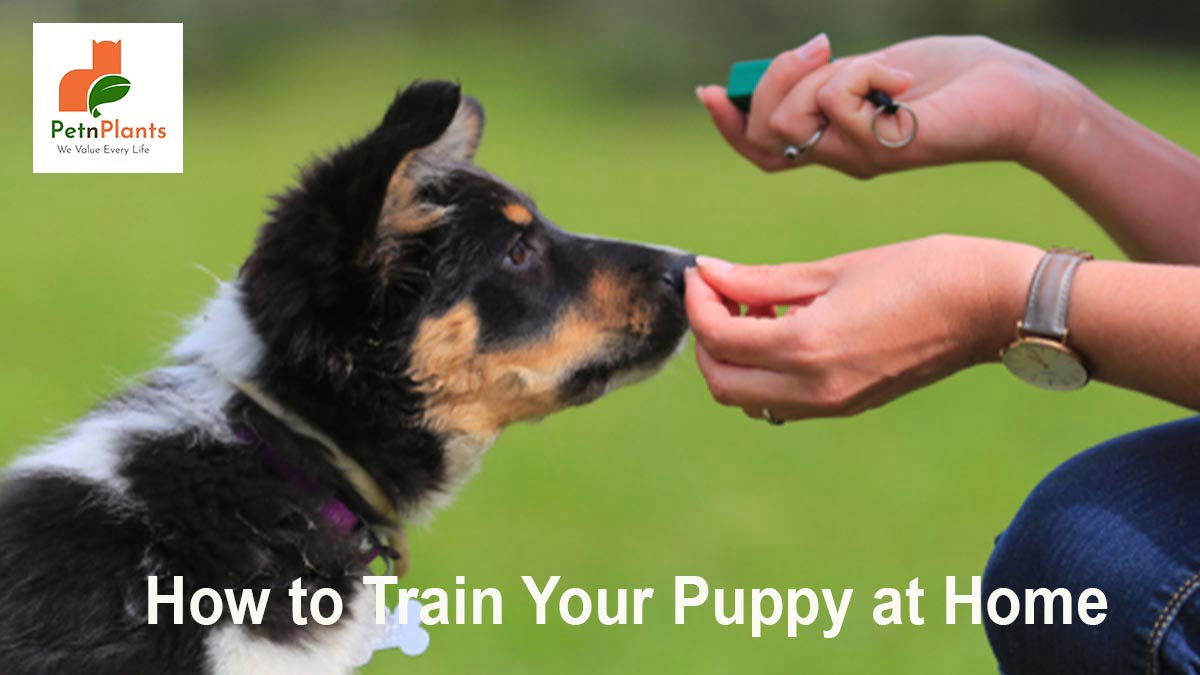How To
Latest
Pet Care
How to Groom Your Dog at Home with the Right Dog Grooming KitMarch 19, 2025
We Value Every Life

When you initially bring your puppy home, they may not be entirely well-equipped to stay in a house. Thus, getting your puppy into a regular pattern and paying attention to everything they do or their behavior might help you avoid minor mishaps. Play and training are essential for your puppy’s healthy development. Henceforth, train your puppy at home and acquire a better chance of helping them mature into a balanced and happy adult dog. Puppies are quick to learn and appreciate a well-planned training session.
Puppy training for beginners starts with teaching your puppy to sit. To persuade your dog into a sitting position:

You may train your puppy at home by teaching them to lie down by holding a reward in your hand, occasionally lowering it between the front paws, and removing it away from them. Try to give them a treat for their good behavior when they lie down. Continue to repeat this motion by gradually removing the reward until your puppy can finish the action in any situation.
Begin by making a gesture with your hand and saying “Sit” to get your dog to sit. As you say “Stay,” place your hand in the front of your palm.

Wait a few moments before rewarding your dog for the exemplary behavior they have shown. Repeat the exercise now. Ask your puppy to “Sit,” but this time, take a step back with your palm towards your dog and say, “Stay.” After 3 seconds, take action forward and give your dog a treat.
Repeat these steps, progressively increasing the distance you step back and rewarding your dog each time they stay. Don’t forget to let your dog go by urging them to get up at the end of each exercise.
Every dog owner wants to know how to toilet train a puppy in 7 days after getting a puppy home. To attain the same, try taking your puppy outside frequently, especially after they wake up, eat, drink or play. Choose a toilet area outside the home and take your puppy there on a leash every time. Use a particular word or phrase when your dog is urinating to remind them of what they need to do.

After your puppy has gone potty, take them for a lengthier stroll or some fun activity. Praise or give them compelling rewards, but make sure to do so right after they’ve finished, not after they’ve returned inside. This step is critical since the best way to teach your puppy is to praise them for their excellent behavior, including going outside. Make sure they are finished before rewarding them. Depending on their age, puppies may need to eat approximately two or three times a day. If you feed your puppy at a particular time each day, they’ll be more prone to going to the bathroom simultaneously, making house training easy for both of you.
Don’t give them your old shoes or a pair of socks to chew on since they’ll think they’re safe to eat. Hopefully, this step will prevent your dog from chewing on things he shouldn’t. Suppose you notice that your dog is chewing on something they are not allowed to; give them their chew toy. Then make sure to pat your puppy on the head and praise them for chewing the correct item.
Numerous myths may be leading you to not train your puppy at home. However, most of them are simply incorrect, and some of them may even be encouraging harmful behavior. For starters, a dog’s age is not associated with his or her ability to be trained. Older dogs, significantly larger ones or heavy-weight ones, may require physical modifications. Still, they may learn to follow instructions just as well as younger dogs. A well-behaved puppy is less likely to be stressed, more capable of social interactions, and has a stronger bond with you.
0